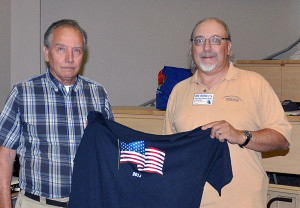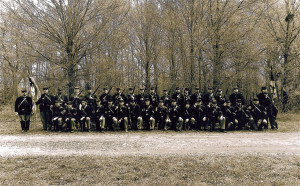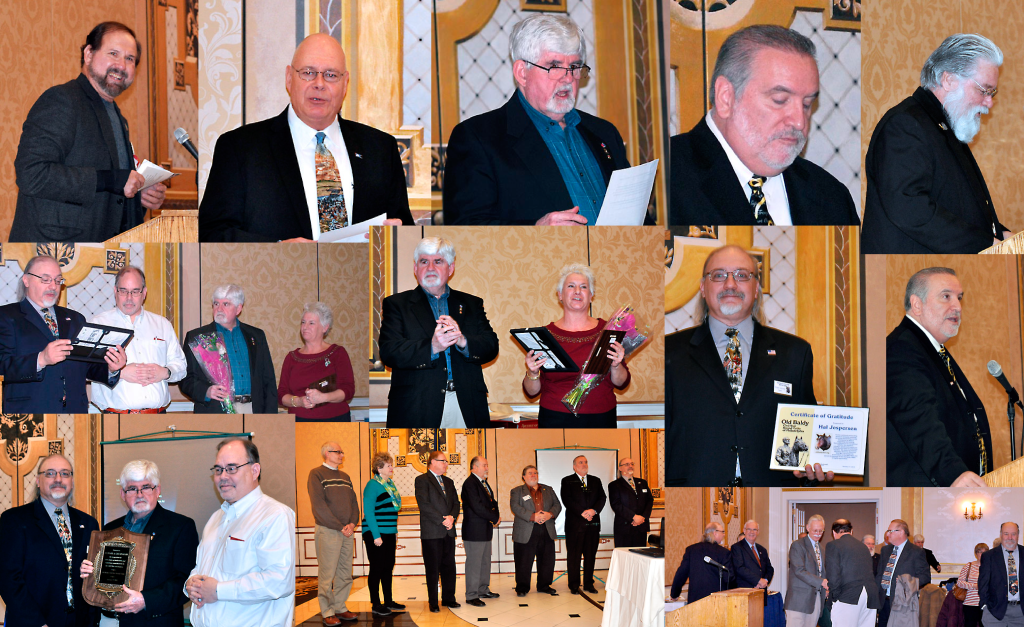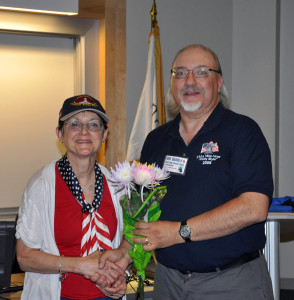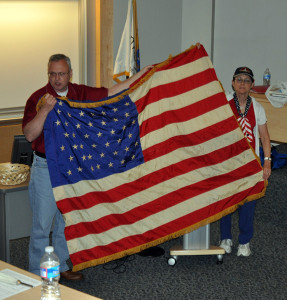Camden County College, Old Baldy Civil War Round Table Fall Lecture Series
Beyond Gettysburg: The Fiery Trial Continues
Despite the Union victory in the Battle of Gettysburg, the Civil War dragged on for nearly two more years. This series of lectures will focus on what came after Gettysburg, how the war-weary nation perceived the meaning of that battle, and the means by which President Lincoln sought to bring an end to the War.
The Economics of War: How Financial Decisions North & South Influenced the War’s Outcome
Tuesday, September 23, 2014, 7:00 pm
An informative presentation by Matthew Borowick, Executive Director of the Civil War Library & Research Center in Woodbridge, NJ, and columnist for Civil War News. It is customarily believed that wars are won and lost by the actions of generals and armies. However, those armies cannot fight unless they are properly trained, equipped and fed, and that takes the effective and efficient management of resources. How the North and the South managed their resources provides a fascinating look into why one side succeeded—and the other side failed.
Andersonville Prison: An American Tragedy
Tuesday, September 30, 2014, 7:00 pm
Presenting is Joseph F. Wilson, a member of the General Meade Society, the Civil War Trust, and the Old Baldy CWRT. Come hear the tragic story of Andersonville Prison, where more than 45,000 Union soldiers were confined between February 1864 and April 1865. In those fourteen months 13,000 soldiers perished from disease, starvation and exposure. Joe’s Great-Great-Grandfather, Corporal George Garman, 36th Pa. Volunteers, survived the horrors of Andersonville.
Gettysburg: History and Hype
Tuesday, October 7, 2014, 7:00 pm
A very interesting take by Dr. Gregory J. W. Urwin, Temple University Professor of History, and President of the Society for Military History, as to how Americans have come to perceive war and victory. Mistakenly, we understand human conflict simply as a succession of clashes with victory gained by the side that wins the most or biggest ones. This lecture compares Gettysburg with other truly decisive Union victories, and considers our distorted view of what the Civil War was really like—then, and still today.
Grant Comes East – 1864
Tuesday, October 14, 2014, 7:00 pm
Jay Jorgenson, author, history professor, attorney and municipal court judge, takes us from the two major victories in the summer of 1863—Gettysburg in the east and Vicksburg in the west—into the pivotal year of 1864. Despite these key victories, President Lincoln found it increasingly difficult to bring the war to a successful conclusion, and brought Ulysses S. Grant east to take command of all Union forces. Grant implemented a plan to keep intense pressure on all of the Confederate armies in the South, with the clear intention of guiding the Union war effort to a successful outcome.
John Bachelder’s Gettysburg: His Influence Then and Now
Tuesday, October 28, 2014, 7:00 pm
Steven J. Wright has served as a Park Ranger at Gettysburg, Curator for the Civil War Library & Museum of Philadelphia, and as Special Collections Librarian for the Free Library of Philadelphia. The question that is often asked is why the battle of Gettysburg has received—and continues to receive—the attention it does? Steve offers that it may be largely due to the role that John Bachelder played in the preservation of the battlefield and ultimately the impact that he had on how the battlefield looks today. Much of the way we have come to see the battlefield, and the way that we still study and even talk about the battle, was influenced by Bachelder, as it was he who coined the phrase “copse of trees”, and created the popular term “High Watermark of the Confederacy”. The fields we walk today, the troop movements we study, and the monuments placed upon those hallowed grounds, are not by mere happenstance, but rather a carefully and precisely conceived plan to tell the story of this grandest of struggles to future generations.
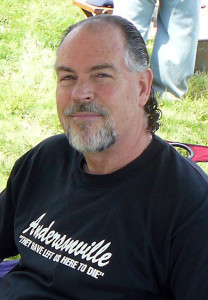 Old Baldy C.W.R.T. member Joe Wilson discussed some of his most interesting relics that have a solid history and are often identified to a soldier. An identified relic opens the door and sheds light on the path of the relic through its storied history. Included in the presentation will be the personal Bible of Joe’s great-great-grandfather, Corporal George Garman of the 36th PA Volunteers, which came into Joe’s possession by a series of strange coincidences after a visit to Greenwood Cemetery in Northeast Philadelphia. Glued to the back cover of the Bible, Joe found a photo of Corporal Garman taken upon his release from Andersonville Prison. This image lent a face to an ancestor he had been researching for many years.
Old Baldy C.W.R.T. member Joe Wilson discussed some of his most interesting relics that have a solid history and are often identified to a soldier. An identified relic opens the door and sheds light on the path of the relic through its storied history. Included in the presentation will be the personal Bible of Joe’s great-great-grandfather, Corporal George Garman of the 36th PA Volunteers, which came into Joe’s possession by a series of strange coincidences after a visit to Greenwood Cemetery in Northeast Philadelphia. Glued to the back cover of the Bible, Joe found a photo of Corporal Garman taken upon his release from Andersonville Prison. This image lent a face to an ancestor he had been researching for many years.
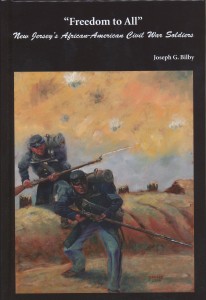
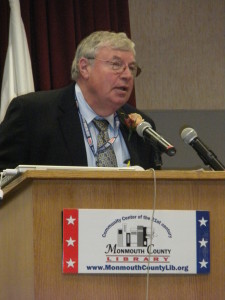
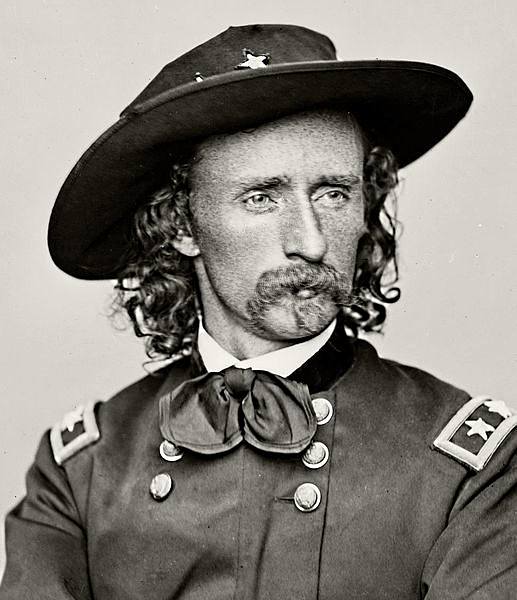 The first full-length biography of George Armstrong Custer appeared within months after his death – just about the same time that a dramatic portrayal of his killing was created for Buffalo Bill Cody’s traveling Wild West Show. Since that day in June 1876 when George Armstrong Custer lost his life on the rolling hills above the Little Big Horn River, his life and death have been steeped in mystery and legend. People who have never read a word about Custer have strong opinions about what kind of person he was and how he lived his life. With “The Custer Myth” Steven Wright explored how the legend came to be and how Custer’s life differed from and was similar to the legend.
The first full-length biography of George Armstrong Custer appeared within months after his death – just about the same time that a dramatic portrayal of his killing was created for Buffalo Bill Cody’s traveling Wild West Show. Since that day in June 1876 when George Armstrong Custer lost his life on the rolling hills above the Little Big Horn River, his life and death have been steeped in mystery and legend. People who have never read a word about Custer have strong opinions about what kind of person he was and how he lived his life. With “The Custer Myth” Steven Wright explored how the legend came to be and how Custer’s life differed from and was similar to the legend.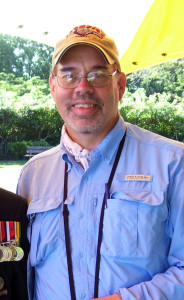 Steven J. Wright first developed an interest in the Lincoln assassination and Civil War by perusing his father’s personal library as a young boy. He has a Bachelor of Arts degree from St. John’s University (Collegeville, MN) and a Master of Arts degree in American History and American Indian Studies from the University of Minnesota-Duluth. In addition, he holds a Master of Library and Information Science degree from Drexel University. The former Curator of Collections of the late Civil War Library and Museum, he has written two books, including a small volume on the Irish Brigade, contributed to seven other volumes, and published more than 300 articles or book reviews in such publications as Blue and Gray, America’s Civil War, Civil War News, Civil War Times, The Courier, The Surratt Courier, the Lincoln Herald, and the Wild West History Association Journal. He is a member of the faculty of the Civil War Institute of Manor College, in Jenkintown, PA. In addition he is a member of a number of historical societies and Civil War Round Tables, including being Past President of Old Baldy Civil War Round Table and is a Life Member of the Surratt Society. Wright currently works as a Librarian with the Free Library of Philadelphia. He lives in Philadelphia with his wife, Irene, who is a Children’s Librarian with the Free Library of Philadelphia.
Steven J. Wright first developed an interest in the Lincoln assassination and Civil War by perusing his father’s personal library as a young boy. He has a Bachelor of Arts degree from St. John’s University (Collegeville, MN) and a Master of Arts degree in American History and American Indian Studies from the University of Minnesota-Duluth. In addition, he holds a Master of Library and Information Science degree from Drexel University. The former Curator of Collections of the late Civil War Library and Museum, he has written two books, including a small volume on the Irish Brigade, contributed to seven other volumes, and published more than 300 articles or book reviews in such publications as Blue and Gray, America’s Civil War, Civil War News, Civil War Times, The Courier, The Surratt Courier, the Lincoln Herald, and the Wild West History Association Journal. He is a member of the faculty of the Civil War Institute of Manor College, in Jenkintown, PA. In addition he is a member of a number of historical societies and Civil War Round Tables, including being Past President of Old Baldy Civil War Round Table and is a Life Member of the Surratt Society. Wright currently works as a Librarian with the Free Library of Philadelphia. He lives in Philadelphia with his wife, Irene, who is a Children’s Librarian with the Free Library of Philadelphia. Was there a particular book related to the Civil War that first grabbed your attention and led you to a lifelong interest in this history? What Civil War book or books stand out in your memory and why? Are you reading something right now that you have found riveting and would recommend?
Was there a particular book related to the Civil War that first grabbed your attention and led you to a lifelong interest in this history? What Civil War book or books stand out in your memory and why? Are you reading something right now that you have found riveting and would recommend?